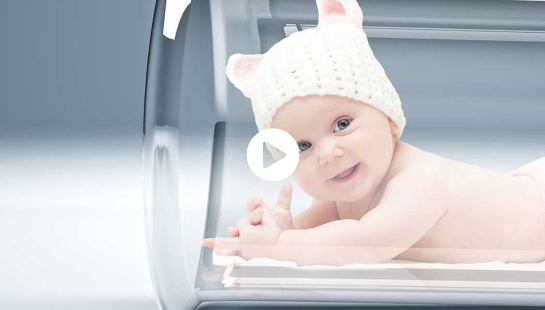Screening tests can be done for some chromosomal diseases in the follow-up of your pregnancy. Screening tests are performed for trisomy 21 (Down), trisomy 13 and 18. Screening tests are not diagnostic tests, they are tests that show how much risk you have for this Chromosome 3 anomaly, which is accompanied by mental disability and multiple organ anomalies, as percentage. As a result of screening tests, it is wrong to expect results as if your baby has chromosomal anomaly or not.If it is determined that you have a higher risk than the threshold value determined as a result of the tests, diagnostic tests are performed, which are amniocentesis and CVS. The earliest and most reliable screening test is the first trimester screening test, or the test called dual screening test, and these are done between 11-14 weeks of gestation. The parameters used in this test are mother’s age, ultrasonographic markers and biochemical markers in the blood taken from the mother. The thickness of the nuchal translucency and the presence of nasal bone are the ultrasonographic markers used in the test. Biochemical markers are PAP-A, E3, FreeBHCG. The result of your screening test is based on the calculation of your risk based on the biostatistically determined average values of these markers. Risks defined as greater than 1/200 for Down and greater than 1/350 for trisomy 13 and 18 fall into the high-risk group. If you are in this group, your doctor will recommend amniocentesis or CVS. If you are in the low-risk group as a result of the test, AFP (mom) test or quadruple screening test can be performed to screen for some abnormalities in the cerebrospinal axis, according to your doctor’s preference, between 16-18 weeks of pregnancy.

What is Chorionic villus Sampling or CVS?
It is the process of sampling from the chorion, which will form the placenta in the later period of pregnancy, for the purpose of genetic diagnosis. The purposes for which they are performed are generally the same as for amniocentesis. However, it is a preferable method because it is performed at an earlier gestational week. It is applied at 9-11 weeks of pregnancy. If an anomaly is detected in the genetic material taken during these weeks, the pregnancy is ended at 14 weeks at the latest and causes less psychological trauma in the family. However, the risk of miscarriage after the procedure is higher than amniocentesis. It is calculated as approximately 2%.
What is cordocentesis?
It is the process of sampling blood from the baby’s cord by entering the mother’s womb with an ultrasound-guided needle. The procedure is performed under sterile conditions. It is usually not easy to do before the 20th gestational week. It is done for the purpose of genetic research, as well as to investigate infectious diseases of the baby and to determine the severity of blood incompatibility (20). This process can also be used for therapeutic purposes. For example; If blood incompatibility has caused anemia in the baby, blood transfusion can be performed to the baby in the womb by cordocentesis method.

What is Amniocentesis?
Amniocentesis means examining of the fluid which your baby is in, by sampling through the help of a needle. There are evidences in this liquid that will reveal important information about your baby’s development. While the amniocentesis application is applied in the past years to reduce the excess amniotic fluid, to investigate the well-being of the baby, and to control the baby’s condition regarding blood incompatibility in the following years; today, it is one of the most valid tests used in the detection of genetic anomalies. The procedure is actually a simple application, but it should still be done by an experienced doctor. It is not preferred because the risk of miscarriage is higher in early pregnancy weeks. Ideally, it is preferred to be done at the 17th week of pregnancy, when the placenta is completed.
The mother is placed on her back on the ultrasound table and her womb is sterilized. The procedure is usually performed by a doctor and an assistant. While the position of the baby in the mother’s womb is carefully monitored by ultrasound, the needle is placed in a suitable part of the navel. The needle is first pushed through the abdominal layers, then the uterine muscle, towards the amniotic sac, and a small amount of the baby’s amniotic fluid is taken by means of an injector at the tip of the needle. After the taken liquid is separated in the lab environment, the cells mixed with this liquid from the baby are produced in the media and examined to see if there is a genetic abnormality.
Theoretically, there are risks such as curettage due to the procedure, infection, opening of the water bag, damage to the placenta or cord, risk of premature birth, inability to produce cells as desired from the fluid taken, and harming the baby with the needle used to take fluid. However, the probability of these risks is not more than 1% in the hands of experts. Amniocentesis is an indispensable examination method because of its beneficial results and the lack of any other test to replace it when necessary. No preparation is required for the test. It is not painful to reach the uterus by means of needle from the abdomen. Even, the procedure is performed without the need for local anesthesia. The patient is rested for half an hour after the application.
Are amniocentesis results reliable?
When evaluated by a good laboratory, the results can be 99.9% reliable. The margin of error of a normal chromosome analysis is very low. When an abnormal situation occurs, it may be necessary to confirm the abnormal situation by sampling blood from the baby with a method such as cordocentesis. Problems in diagnosis are abnormal conditions such as inversion, translocation, or mosaic in the chromosomes. When these are detected, it may not be possible to determine in advance how the unborn baby will be affected. If either one of expectant parent has the same type of disorder and is normal, their baby will quite likely be normal as well.







